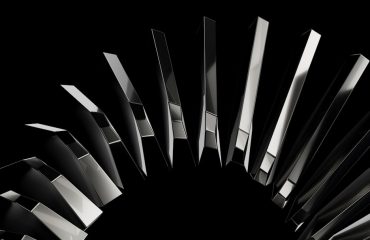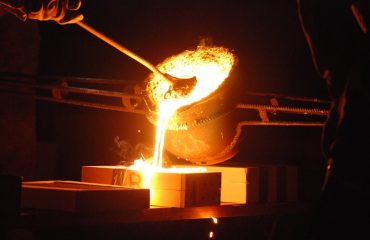Cold drawn flat bars are a cornerstone of numerous industries, providing exceptional dimensional accuracy and superior mechanical properties. This comprehensive guide delves into the world of cold drawn flat bars, exploring their manufacturing process, characteristics, applications, and considerations for selection.
The Manufacturing Process of Cold Drawn Flat Bars
The creation of cold drawn flat bars begins with hot-rolled steel bars. These bars, already possessing a basic shape, undergo a series of crucial steps to achieve the desired precision and quality. The process starts with pickling, a chemical cleaning process that removes surface oxides and scale. Next, the bars are cold drawn through a series of dies, progressively reducing their cross-sectional area and improving their surface finish. This cold drawing process significantly increases the tensile strength and yield strength of the steel while simultaneously enhancing its dimensional accuracy. The final step often involves straightening and cutting to the required lengths. The precise control over temperature and reduction during cold drawing allows for extremely tight tolerances, making cold drawn flat bars ideal for applications demanding high precision.
Mechanical Properties and Material Composition of Cold Drawn Flat Bars
Cold drawing significantly alters the mechanical properties of the starting steel. Compared to hot-rolled counterparts, cold drawn flat bars exhibit:
- Higher Tensile Strength: The cold working process strengthens the metal’s crystalline structure, leading to increased tensile strength.
- Improved Yield Strength: The yield point, the stress at which permanent deformation begins, is also significantly elevated.
- Enhanced Surface Finish: The drawing process results in a smoother, more refined surface, reducing the need for further finishing operations.
- Better Dimensional Accuracy: Cold drawing allows for the production of bars with exceptionally tight tolerances.
- Increased Hardness: The cold working process increases the hardness of the steel, making it more resistant to wear and tear.
Common materials used for cold drawn flat bars include low carbon steel, medium carbon steel, high carbon steel, alloy steels, and stainless steels. The specific material selection depends heavily on the intended application and the required mechanical properties.
Diverse Applications of Cold Drawn Flat Bars Across Industries
The versatility and precision of cold drawn flat bars make them indispensable in a wide range of industries. Some key applications include:
- Automotive: Used in chassis components, suspension parts, and other structural elements requiring high strength and dimensional accuracy.
- Construction: Employed in structural components, reinforcing bars, and other applications where strength and durability are paramount.
- Machinery Manufacturing: A critical component in various machine parts, requiring precise dimensions and excellent mechanical properties.
- Aerospace: Used in aircraft components where lightweight yet high-strength materials are essential.
- Medical Devices: In applications requiring biocompatibility and precision, specific grades of stainless steel cold drawn flat bars are utilized.
- Agricultural Equipment: Used in components that need to withstand harsh conditions and heavy loads.
The specific grade of steel chosen will depend on the demands of the application, considering factors such as corrosion resistance, fatigue strength, and required hardness.
Advantages and Disadvantages of Utilizing Cold Drawn Flat Bars
While offering many benefits, it’s crucial to understand both the advantages and disadvantages of using cold drawn flat bars:
Advantages:
- Superior Dimensional Accuracy: Exceptional tolerances make them ideal for precision engineering applications.
- Enhanced Mechanical Properties: Higher tensile and yield strength compared to hot-rolled counterparts.
- Excellent Surface Finish: Reduces the need for secondary finishing processes, saving time and cost.
- Wide Material Selection: Available in various steel grades to meet diverse application requirements.
- Cost-Effective for Precision Parts: The improved accuracy often reduces machining time and waste.
Disadvantages:
- Higher Initial Cost: The manufacturing process is more complex than hot rolling, resulting in a higher initial cost.
- Limited Size Range: Compared to hot-rolled bars, the available sizes might be more restricted.
- Potential for Residual Stresses: Cold working can induce residual stresses, which might need to be considered in design.
- Work Hardening: Excessive cold working can lead to work hardening, making the material more brittle.
Careful consideration of these factors is crucial for optimal material selection and design.
Selecting the Right Cold Drawn Flat Bar for Your Needs
Choosing the appropriate cold drawn flat bar involves considering several key factors:
- Material Grade: Select the grade based on the required strength, hardness, corrosion resistance, and other mechanical properties.
- Dimensions and Tolerances: Specify the exact dimensions and acceptable tolerances to ensure a precise fit.
- Surface Finish: Define the required surface roughness for the application.
- Quantity and Delivery Time: Consider the project’s scale and required delivery timeframe.
- Cost: Balance the initial cost with the long-term benefits of using a high-quality material.
Consulting with a materials specialist can help ensure the correct selection for your specific application.
In conclusion, cold drawn flat bars offer a compelling combination of precision, strength, and versatility, making them an essential material in a wide range of industries. Understanding their properties and selection criteria is crucial for engineers and manufacturers seeking high-quality, reliable components.




